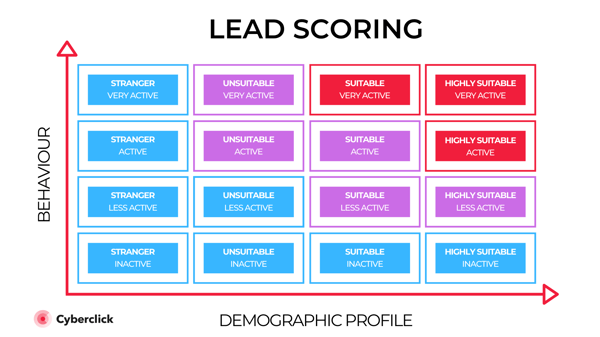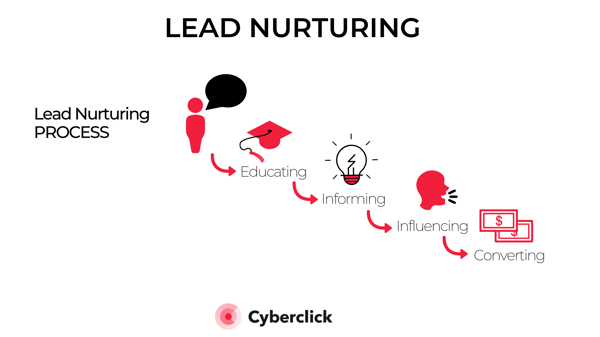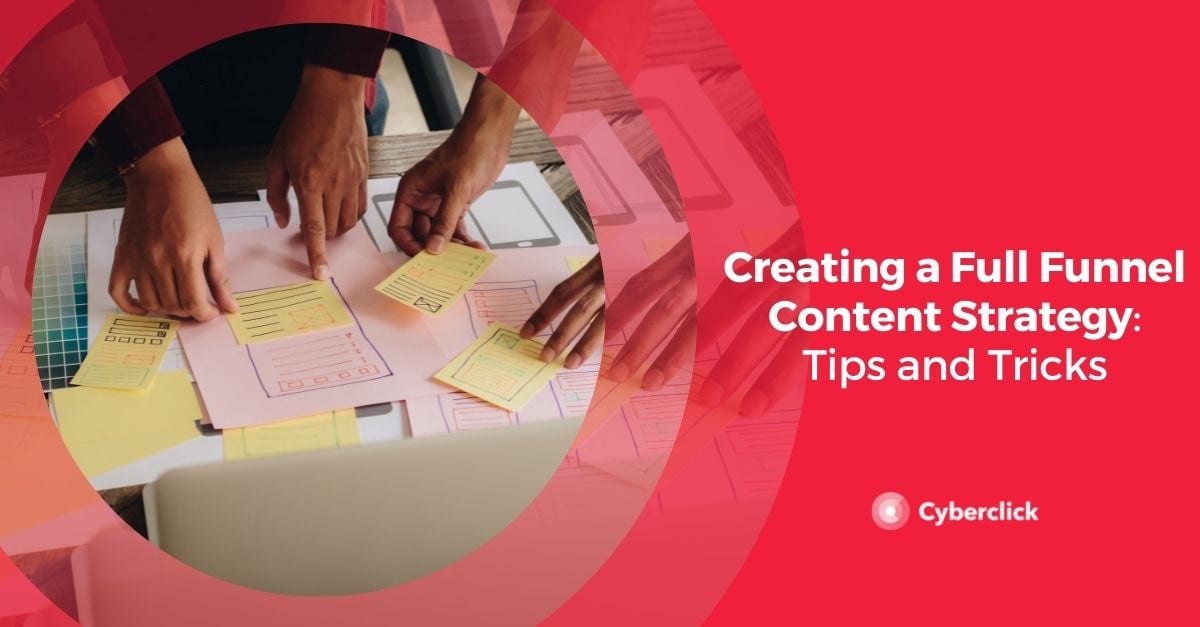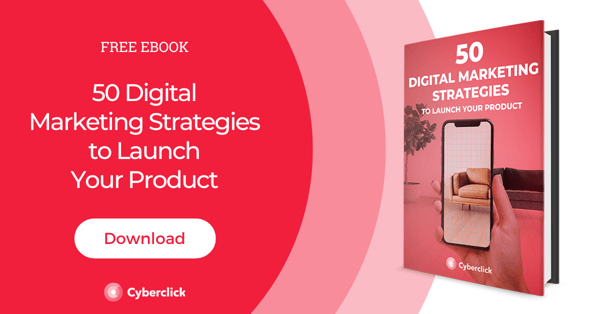By Laia Cardona, on 21 November 2019
The formula for success in inbound marketing can be summed up with just one sentence: “The right content, at the right time, on the right channels, to the right audience.” Sounds easy enough, right?
But the challenging aspect of that model is pinpointing the best content to create for each segment of users. The answer to that concern relies on the phase in which the user is in: recruitment, conversion, sale, or loyalty.
In this article, we'll explain the process of creating a full-funnel content strategy in order to attract and convert your audience.
You may also be familiar with the conversion funnel, which uses terminology like TOFU, MOFU, and BOFU to classify users according to what stage of the buyer's journey they are in.
1st Funnel Phase: Attract
In the first phase of the conversion funnel, we want to attract traffic and turn strangers into regular visitors to our website.
To do this, we can use a wide variety of strategies, such as:
- SEO: Through optimizing our own websites (SEO on-page) and link-building techniques (SEO off-page), you can position your brand among the top results of Google. This can help you obtain clicks when users search for terms related to your products or when they’re trying to solve a problem.
- SEM: This technique is also based on improving your search engine positioning, but in this case, the focus is on paid ads.
- Social Media: Along with establishing a brand presence and community, social networks can also help to attract visitors. You can post your content to your pages, use promoted postings, and social ads.
- Email Marketing: This tool can be very valuable for generating visits, but stay away from shady recruitment strategies. Buying third-party databases is usually not a good idea, especially with the new GDPR rules.
- Brand and Public Relations Campaigns: For example, events aimed at influencers.
Content to Attract Your Audience
In this phase, the best content will be content that is generic and focused on solving a need that the user has detected. Here are a few examples:
- Blog Articles: No matter what you choose to write about, make sure they solve your audience’s needs and that they are interesting to read. Make your blog posts digestible: use short paragraphs, lists, sections, etc. When it comes to attracting clicks, use a headline that hooks the reader in. There are many formulas that can work, from “7 things you didn’t know about x” to “example of the best x.”
- In-Depth Guides: This type of content seeks to fully inform a reader about a topic of interest. This can be in blog format or through an eBook.
- Video Tutorials: Videos show users how to do something they need in a quick and entertaining way.
- Podcasts: Podcasts have been on the rise. They’re a great way to increase the brand recognition of your company and position yourself as an expert in your field.
2nd Funnel Phase: Convert
The main goal of the conversion phase is to turn visitors into leads, by encouraging them to give you their data. There are three essential keys: landing pages, forms, and calls to action.
The landing page is a page of your website specially designed to capture leads. Users provide their data in exchange for content.
In order for a landing page to work, it is important that the value offer be appropriate for the audience. Copy and design are also key elements.
Here are a few tricks to creating the perfect landing page:
- Clearly explain the benefits of the offer or the content: As with blog articles, readability is very important. Short sentences, paragraphs, lists, and good headings are your friends.
- Embrace whitespace: Whitespace is pleasing to the eye and it aids in drawing attention to the most important areas.
- Remove all items that are not essential: For example, the navigation menu. The goal is to minimize any distractions that could keep the user from converting.
The form is also an essential element in attracting and converting leads. Forms are where visitors input their contact information. It is important that all fields are very clear, easy to use, and not overwhelming. You do not want to ask for too much information too soon. Ask for just enough to be able to assess whether they could be a lead or not.
CTAs are the elements through which we tell the user what we want them to do. They’re most commonly a button on your website, although they can take several different forms. When you’re designing your landing page you should always make sure the user’s attention is drawn to the CTA.
2nd Funnel Phase Content
In this phase, think of your content as a hook that you’re using to get visitors’ contact information. Users in this stage have a clearer idea of what they need, so you should be offering more specialized content.
- Webinars: Especially useful for B2B companies, webinars offer leads the chance to get their questions answered by chatting with an expert.
- Free samples or trial periods: This is a good option if you are offering a product. However, you have to make the terms of the trial very clear and reduce any objections (for example, some brands do not ask for credit card information until the trial period has ended.)
- Testimonials and case studies: This type of content can reinforce the credibility of your landing page.
3rd Funnel Phase: Sale
Now that you have your lead’s information and you’ve established a relationship, it’s time for the sale! The idea here is to nurture the relationship, turning the lead into a customer. Marketing automation can be a great tool in this phase, using two fundamental strategies:
Lead Scoring
Designing a system to rate each new contact, so that we can objectively know what the chances are of them becoming a customer. Did you know you can also use online surveys to do this?

Lead Nurturing
Depending on the characteristics of the lead, you can use the below process to nurture a lead. The lead will receive a series of personalized communication, based on their unique needs.

To organize all of your sales efforts, you can use different marketing automation tools, like CRMs. The more you automate these tasks, the more fluid the process will be and the more time your team will have for strategy and creativity.
3rd Funnel Phase Content
In this phase, you want to create an offer the lead can’t refuse. You want to use everything you have.
- Free trial periods: Along with capturing leads (phase 2), free trials can also be crucial for encouraging a lead to convert into a customer.
- Limited time coupons and discounts: These offer a convincing and convenient incentive in the sale phase.
- Consultations: Sometimes the best way to solve a lead’s concerns is hopping on the phone or scheduling a 1:1 consultation with an expert from your team.
4th Funnel Phase: Loyalty
Congrats! You’ve earned a new customer. But your work isn’t done yet. You now need to turn your customer into a loyal user. Attracting and converting a new customer is much more expensive than retaining an old one. Don’t forget about your customers.
In the loyalty phase, your focus is on renewing the interest of the client using relevant content and new calls to action. Email marketing is a valuable tool for keeping in touch with your customers and fueling long-term relationships. Online communities, applications, and loyalty cards are also great ways to fuel loyalty.
4th Funnel Phase Content
The most important thing to remember in this phase is that your content should make your customers feel valued and special. Here are some examples:
- Exclusive content: Provide content to your customers that no one else can access. An example would be informing them of a new product launch before anyone else and exclusive allowing them to sign up in advance.
- Special Offers and Discounts: Give your customers customized discounts based on the information you have about them and their previous purchases.
- Special occasions: Celebrate your customer or client’s birthday or your brand's anniversary. Make them feel special!
- Community: Make your customers feel like they’re part of a community with fun content that reminds them of your brand values. Make them shareable, and perhaps you can make this content go viral.
We hope this helps you understand what content should you offer for each phase of the funnel. We’d love to hear what you think!




